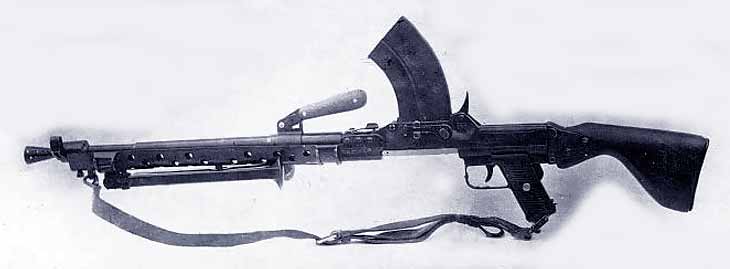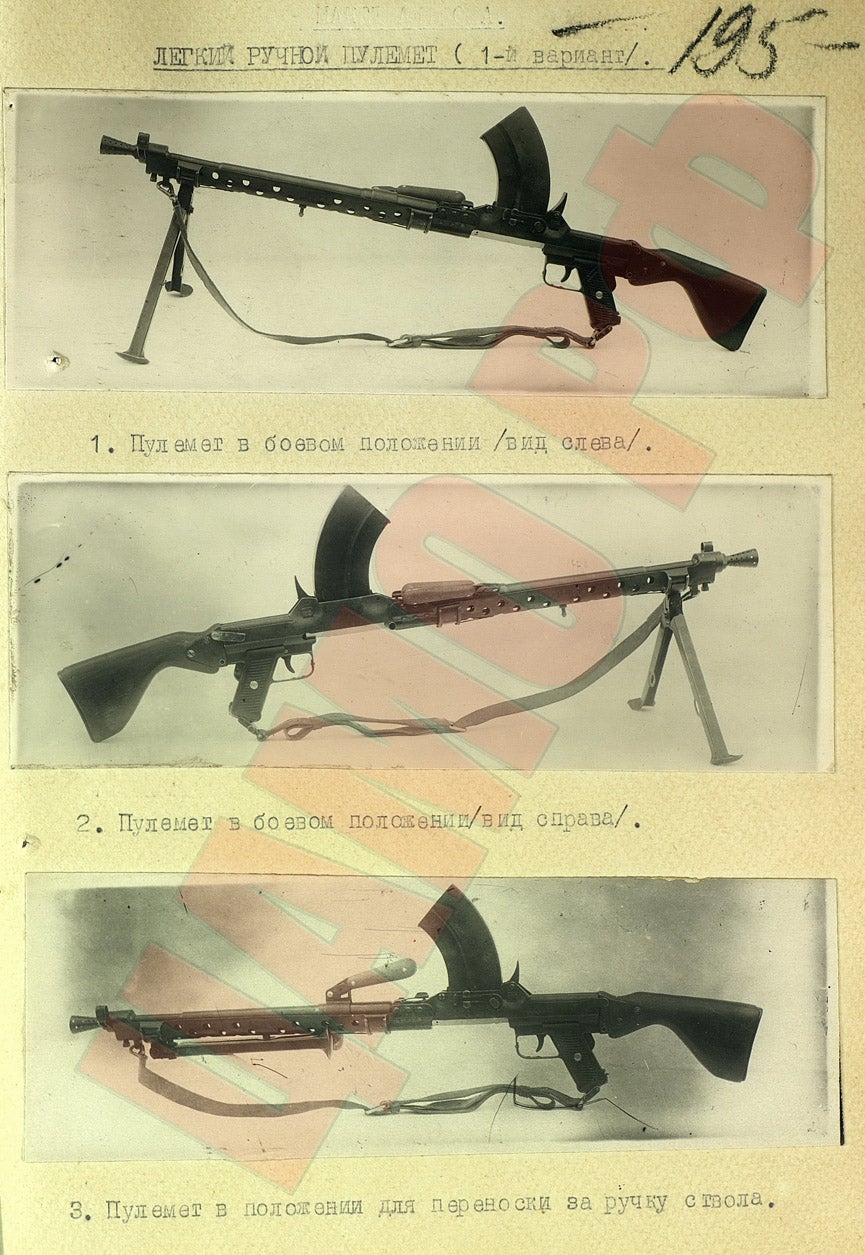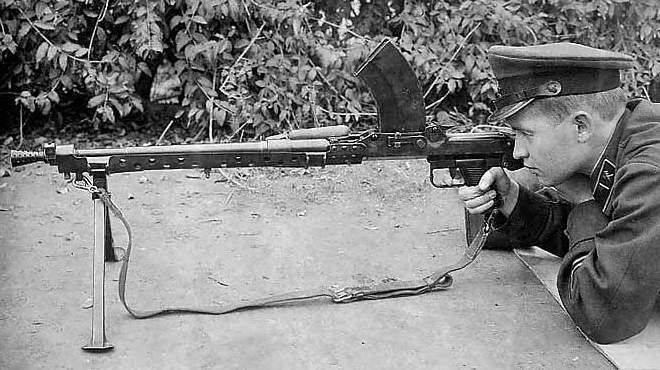This experimental Soviet light machine gun was designed in a military academy called “F.E. Dzerzhinsky Artillery Academy” by a gentleman named Major E. Gorov. In 1942, Gorov finished the designing process of his light machine gun and submitted it to government tests.

Gorov LMG was designed with two stock options: fixed wooden stock and folding metal one. The former was supposed to be the main army model and the latter was to be issued to special forces and paratroopers.


This machine gun was chambered in 7.62x54mmR caliber. It was fed from 20-round detachable box magazines borrowed from Finnish Lahti-Saloranta M26 LMG. The gun used a gas trap operation mechanism where gasses leaving the muzzle are trapped to cycle the action. This mechanism made the barrels simpler to manufacture and easier to change in the field. The gas mechanism was adjustable via a screw located in front of the front sling stud.
Gorov LMG was also equipped with a bipod which was possible to mount on two locations on the gun. The front position of the bipod is shown in the images. The second mounting position bracket is located closer to the breech, below the carry handle. The possibility of choosing the bipod location was incorporated into the design to make it easier to shoot from different positions (from fortifications, from the trenches, when used as an anti-aircraft weapon etc.).

The reciprocating parts were similar to that of Tokarev SVT-40 rifle. It was designed so deliberately. The idea was to make it simpler for the factories that already manufacture SVT rifles to set up a manufacturing process of similar parts. It was also considered to be easier to learn to operate, clean and maintain for the troops that are familiar with the SVT-40.

The overall length of Gorov LMG was 1080mm (42.5″) with the fixed stock and it was 1330mm/895mm long (52″/35″) with the folding stock when the stock was extended/folded. The barrel length was 505mm (20″). The gun weighed 6.5 kilograms (14 lbs 5 oz) with the bipod and in the wooden stock configuration. The rate of fire was 800-850 rpm.

There were some minor satisfying features like the carry handle located close to the center of mass making it easy to carry, the use of stamped parts, easy access to the mechanism etc. The gun also performed not bad in single shots, but the full-auto fire was a complete failure. It had a high rate of misfires. There were 3 misfires from 25 rounds fired in short bursts. It couldn’t fire all the 20 rounds of the magazine in a single burst without a malfunction.
The examination of failures showed that it was not properly designed to work with the borrowed Finnish magazine. The mechanism was not strong enough to work with the magazine. The friction of parts during the feeding process didn’t leave the BCG enough force to reliably hit the primer of the chambered cartridge. The reason they used Lahti-Saloranta magazines was the lack of their own box magazine design for the 7.62x54mmR cartridge with a capacity larger than 10 rounds. Designing a new high capacity magazine for the rimmed rifle cartridge and setting up its manufacturing was not anything easy for them, especially in wartime.
I assume, if Gorov had time to further refine the design, he could probably make it work with the Lahti-Saloranta magazines. However, not being impressed with the first test results, Soviet government officials ordered to halt the further development of the Gorov LMG.
Lastly, here are a couple of scans of the original documents.


Sources:
Gunsforum.com
Yuripasholok.livejournal.com
Zonwar.ru
 Your Privacy Choices
Your Privacy Choices
